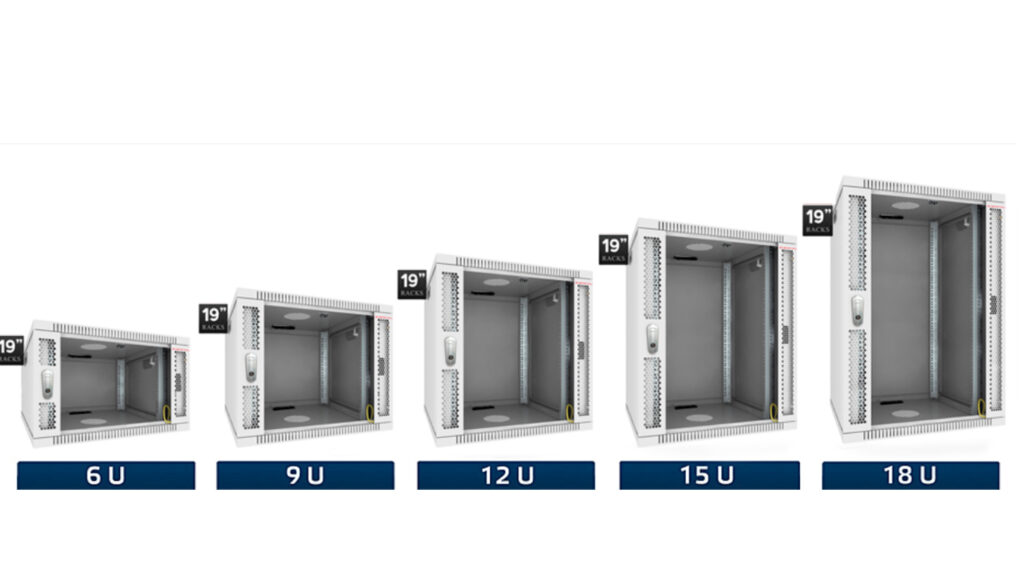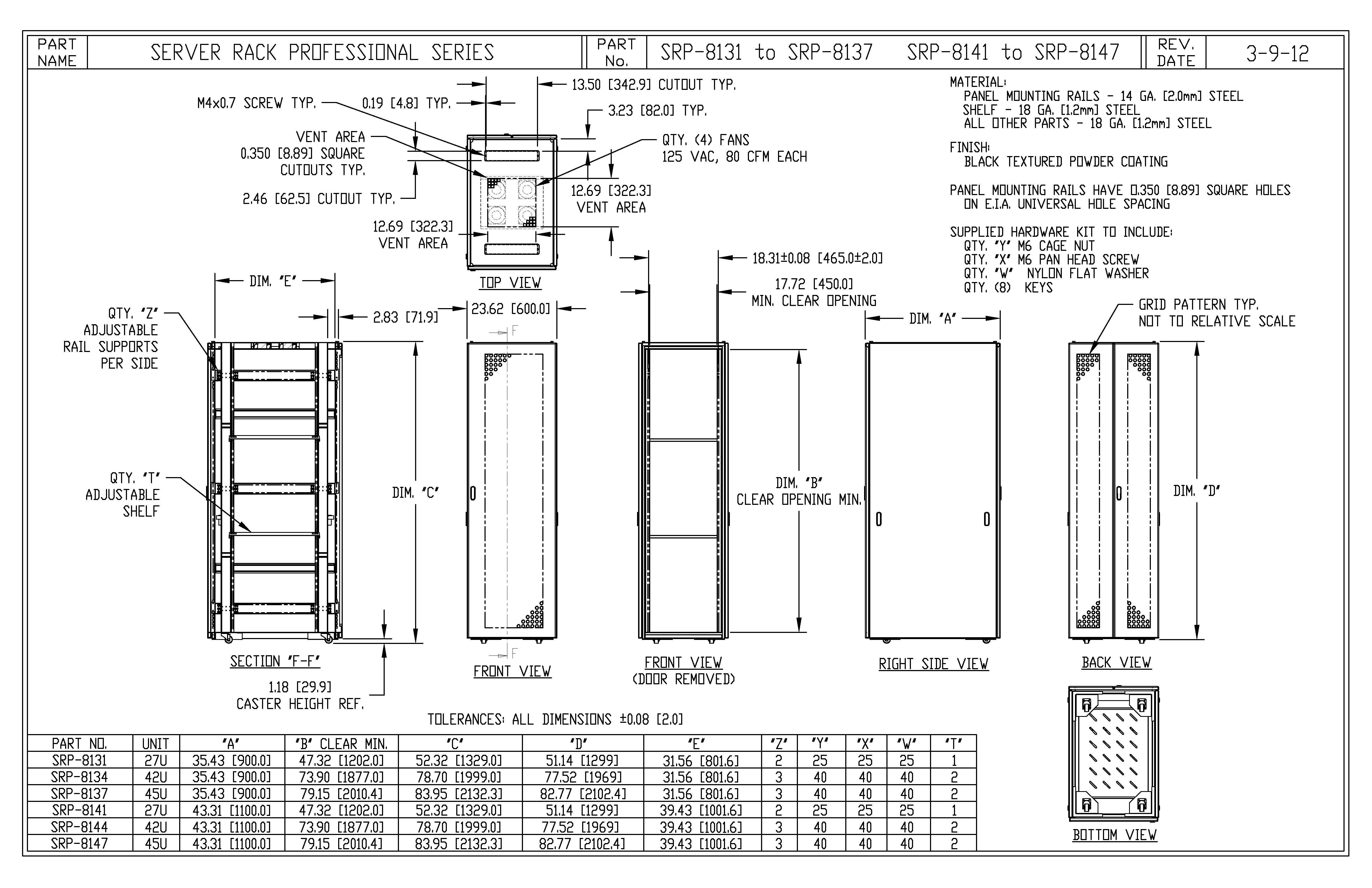Standard 19-inch Rack Cabinet Dimensions
The standard 19-inch rack cabinet dimensions are crucial for organizing and mounting electronic equipment in a structured and efficient manner. These dimensions ensure compatibility between various equipment and cabinets, allowing for seamless integration and flexibility.
Rack Width
The width of a 19-inch rack cabinet is determined by the standard mounting rails, which are spaced 19 inches apart. This dimension is crucial for ensuring that equipment designed for 19-inch racks fits securely and aligns properly.
Rack Depth, 19 rack cabinet dimensions
The depth of a 19-inch rack cabinet is the distance from the front to the back of the cabinet. This dimension is essential for accommodating the equipment’s depth, including components like power supplies, cables, and ventilation systems. Common rack depths include 24 inches, 30 inches, and 36 inches, allowing for various equipment sizes and configurations.
Rack Height
The height of a 19-inch rack cabinet is typically measured in rack units (U), a standardized unit of measurement for vertical space within a rack. Each rack unit (U) is equivalent to 1.75 inches (44.45 mm) of vertical space. This standardized measurement allows for easy planning and organization of equipment within a rack cabinet.
Rack Units (U)
Rack units (U) are a standardized unit of measurement for vertical space within a rack cabinet. Each rack unit (U) is equivalent to 1.75 inches (44.45 mm) of vertical space. This standardization allows for easy planning and organization of equipment within a rack cabinet.
The number of rack units (U) in a cabinet determines the vertical space available for equipment mounting.
For example, a 42U rack cabinet offers 73.5 inches (1866.9 mm) of vertical space for equipment mounting. The number of rack units (U) in a cabinet is often indicated on the front or back of the cabinet.
Variations in 19-inch Rack Cabinet Dimensions

The standard 19-inch rack system offers flexibility in accommodating various equipment sizes and configurations. However, the dimensions of 19-inch rack cabinets can vary significantly, impacting their suitability for different applications and equipment installations.
Cabinet Depth
The depth of a 19-inch rack cabinet is crucial for determining the amount of equipment that can be installed and the overall footprint of the system.
- Shallow Cabinets (12-18 inches): These cabinets are suitable for smaller devices like network switches, routers, and patch panels. Their compact size minimizes space requirements, making them ideal for smaller installations or where space is limited.
- Standard Cabinets (24-30 inches): These cabinets are the most common type, offering ample space for servers, storage systems, and other larger equipment. They provide flexibility in accommodating a wide range of equipment sizes and configurations.
- Deep Cabinets (36-42 inches): These cabinets are designed for high-density deployments, allowing for the installation of larger servers, multiple power supplies, and extensive cabling. They are suitable for data centers and large-scale deployments where space is less of a concern.
Understanding Rack Cabinet Features and Components: 19 Rack Cabinet Dimensions

Rack cabinets are essential for organizing and managing IT equipment, ensuring efficient operation and accessibility. These cabinets offer a standardized framework for housing servers, networking devices, and other electronic components, providing protection and support.
Common Features and Components
Rack cabinets come equipped with various features and components designed to optimize their functionality and meet specific needs. Here’s a table outlining some common elements:
| Feature/Component | Description |
|—|—|
| Doors | Typically made of metal or glass, doors provide security and accessibility to the equipment within the cabinet. They can be solid, vented, or have a combination of both. |
| Ventilation | Proper ventilation is crucial to prevent overheating and ensure optimal performance of the equipment. This can be achieved through fans, vents, or louvers strategically placed within the cabinet. |
| Cable Management | Effective cable management is essential for maintaining organization, reducing clutter, and facilitating easy troubleshooting. It involves using cable trays, organizers, and other accessories to route and secure cables. |
| Rails | These rails provide a standardized mounting system for equipment within the cabinet. They are typically adjustable to accommodate various heights and depths of devices. |
| Mounting Brackets | These brackets attach to the rails and provide secure mounting points for equipment. They are available in various configurations to support different types of devices. |
| Power Distribution Units (PDUs) | PDUs distribute power to multiple devices within the cabinet, offering centralized control and monitoring of power consumption. |
| Grounding | Proper grounding is crucial for safety and to prevent electrical surges. Grounding strips or grounding bars are typically incorporated within the cabinet. |
| Locking Mechanisms | These mechanisms secure the cabinet and its contents, providing an additional layer of protection against unauthorized access. |
Internal Layout Diagram
Imagine a 19-inch rack cabinet as a rectangular box with a vertical frame. Within this frame, rails run vertically on both sides, acting as the mounting points for equipment. These rails are typically adjustable, allowing you to accommodate different equipment heights.
At the rear of the cabinet, you’ll find a vertical channel for cable management. This channel can be used to route and organize cables, keeping them neatly contained and preventing tangles. The rear of the cabinet often has a series of openings or “knockouts” that allow for the easy installation of power cords, network cables, and other connections.
Factors to Consider When Selecting a 19-inch Rack Cabinet
Several factors should be considered when choosing a 19-inch rack cabinet to ensure it meets your specific needs:
– Weight Capacity: Consider the total weight of the equipment you plan to install in the cabinet. Ensure the cabinet has sufficient weight capacity to support the load without compromising its structural integrity.
– Environmental Factors: The environment where the cabinet will be placed is crucial. Consider factors like temperature, humidity, and dust levels. Choose a cabinet that can withstand the environmental conditions and provide adequate protection for your equipment.
– Specific Application Requirements: Consider the specific requirements of your application, such as the type of equipment you’ll be housing, the level of security required, and the need for specific features like ventilation or cable management systems.
– Dimensions: The size of the cabinet should accommodate the equipment you plan to install, while also fitting within your available space.
– Budget: Set a budget and explore cabinets within your price range that meet your requirements.
19 rack cabinet dimensions – Understanding the dimensions of a 19-inch rack cabinet is crucial for efficient server room organization. While server racks focus on technical equipment, a similar concept applies to home decor. Consider incorporating a partition cabinet living room to divide spaces, creating a sense of organization and privacy.
Like a server rack, these cabinets provide designated storage, enhancing both functionality and aesthetics. Similarly, the precise dimensions of a 19-inch rack cabinet ensure proper equipment installation and ventilation.
Understanding 19 rack cabinet dimensions is crucial for setting up a server room or network closet, but don’t forget the importance of organization in your home too! If you’re looking to maximize space and efficiency in your laundry room, consider investing in home hardware laundry room cabinets.
Just like those 19 rack cabinets, these dedicated storage solutions can keep your laundry supplies neat and tidy, making your chores a breeze.
